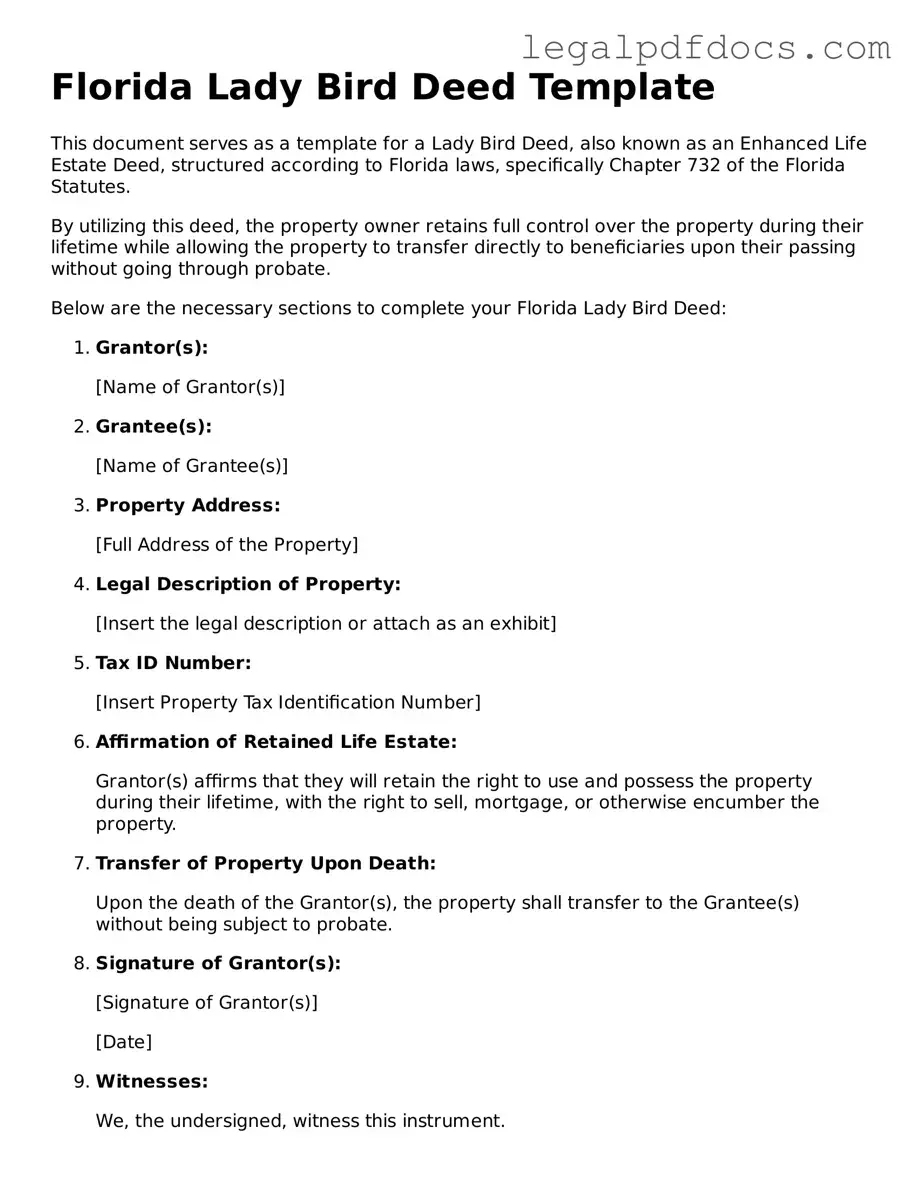In the realm of estate planning, the Florida Lady Bird Deed stands out as a valuable tool for property owners seeking to navigate the complexities of transferring real estate while retaining certain rights. This unique form allows individuals to convey their property to designated beneficiaries while maintaining the ability to live in and manage the property during their lifetime. Unlike traditional deeds, the Lady Bird Deed offers a seamless way to avoid probate, which can often be a lengthy and costly process. One of its most notable features is the ability to retain control over the property, allowing the grantor to sell, mortgage, or even revoke the deed without the consent of the beneficiaries. Additionally, upon the grantor's passing, the property automatically transfers to the beneficiaries without the need for court intervention, simplifying the transition and providing peace of mind. Understanding the nuances of this deed is essential for anyone considering its use, as it can significantly impact both estate planning and tax implications for heirs. As property owners in Florida explore their options, the Lady Bird Deed emerges as a compelling choice for those looking to maintain control while ensuring a smooth transfer of assets to loved ones.
